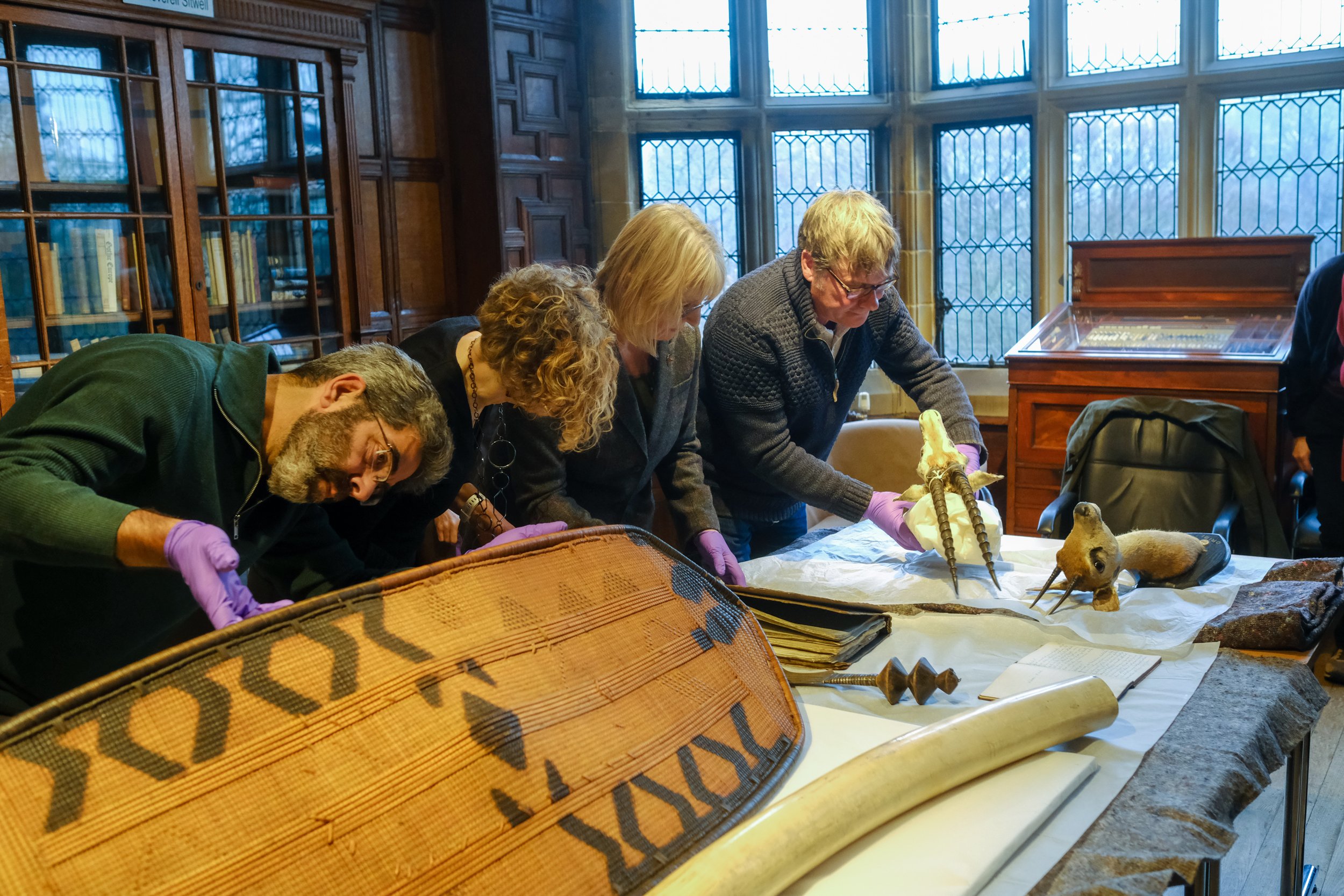
Trustee Reflections
By Lawrence Searby and Jonathan Wallis
On 1 December 2021, Gifty Burrows, and Curator, Dorcas Taylor, introduced staff and Trustees to some of the objects from the Harrison Collection and talked about the impact of our colonial past on the collection and the opportunity we have to re-evaluate it, from multiple perspectives. Lawrence Searby and Jonathan Wallis, who both attended the event, offer some reflections.
Elephant tusk presumed to be part of the Harrison collection. He had a number of tusks on display in his house, and also used Ivory to help fund some of his expeditions.
"I found the event both interesting and, to some extent, the history very distasteful, with a degree of shame. But history, good and bad, should not be buried and glossed over.
The fact that Harrison was very local (Brandesburton being only some 30 miles from Scarborough) makes it particularly interesting to link with the social history of Scarborough, both its trade and people.
Whilst I was aware of the Harrison Collection held by SMT at Woodend, it has for many years laid dormant in the archive despite being in the collection in various locations in Scarborough since 1923 and, like the rest of SMT collection, actually belongs to Scarborough Borough Council.
With the current (good and bad) interest in our colonial past, especially with ‘Black Lives Matter’ and the debates re. statues, it is timely that we consider our collection as a way of furthering the debate and education about our past.
Advertisement from ‘Country Life’ magazine, March 1963 [1]
The collection raises many questions about attitudes in the late 19th century and early 20th century with regard to animals and colonised peoples. Viewed against today’s values they perhaps are seen as distasteful at best, but it is always difficult to view history in the light of today’s values. It could be argued that in some ways our values are different, but no better. We still kill millions of animals for food and shoot and hunt animals (and endangered species) for sport and recreation.
I noticed today an advertisement for a Ford Cortina Estate dated 1963 [1], which refers to the load space being, ‘long enough to carry any tigers you may shoot’.
Harrison was clearly not alone in his pursuits, and I hope the project considers the wider issues of privilege and wealth, which enabled such leisure activities to be supported by his peers.
Scarborough’s economy was not only as the premier seaside resort but also one of trade particularly in fishing and shipbuilding. Links with other less desirable trades of whaling in nearby Whitby and Hull (including the end of slavery) should perhaps be considered.”
Lawrence Searby is a Trustee of Scarborough Museums Trust.
“I have been working with the National Trust in Yorkshire for more than 3 years and have recently been researching the stories of colonialism which relate to the places in their care. The stories are numerous and sometimes shocking, and just occasionally they are heart-warming too. It seems that almost everywhere in Britain has been touched by our country’s colonial past.
The photo shows a ‘Nguba’ Wicker Shield. Basket shield from the Congo, early 20th century. No provenance but it is presumed to be part of the Harrison Collection
James Harrison is not totally unique. Many of our large country houses contain stories of similar people who participated in hunting big game across South Asia or Africa. Like Harrison we occasionally hear stories of people who brought indigenous Africans back to Britain for curiosity, education and entertainment. What I find most interesting about Harrison though is just how much of his story survives. When we arrived at Woodend to hear about the Local to Global project we were shown a whole range of things which brought his story to life in a way that is unusual. Not only do the hunting trophies (the taxidermy animal heads, skins and elephant tusks) exist but the albums of photographs and the diaries recording the hunting trips along with the things that he collected that were made and used by the indigenous people from the places that he visited. These are the things that make this story feel real today. We could see the faces of the people that Harrison met as well as the places that he visited along the way. We were able to read about the number of each of the species that he shot on specific days alongside a commentary of what he was doing and thinking. These things are so valuable in telling the story and I am pleased that is what Scarborough Museums Trust are in the process of doing.
This is not about pointing a finger at someone from the past and judging them by today’s standards. We know from newspaper reports that some people did not support all of his activities at the time. It’s got to be about the legacy of all this in today’s world. How might we use these stories to make the society that we live in fairer and more inclusive in 2022 and beyond? Scarborough Museums Trust has taken the first steps on the journey to understand the stories that, through the sea which on our doorstep, link us across the world, and the legacy for us and those places that we have touched. I am looking forward to finding out more…
Jonathan Wallis is a trustee of Scarborough Museums Trust.
